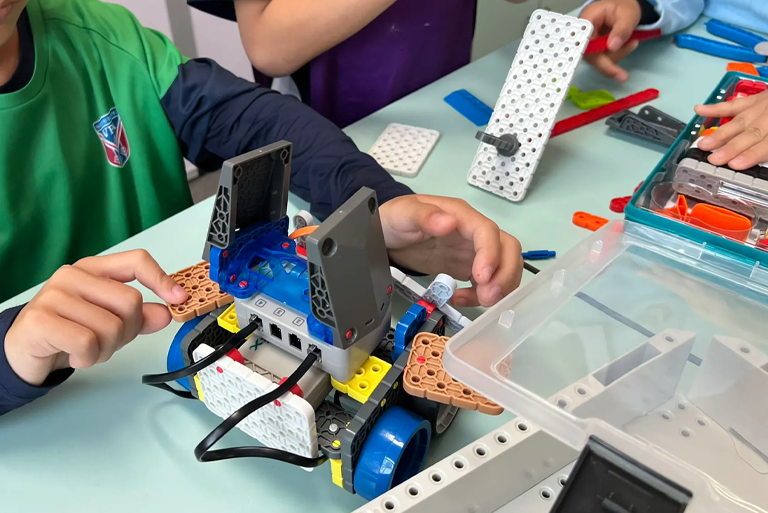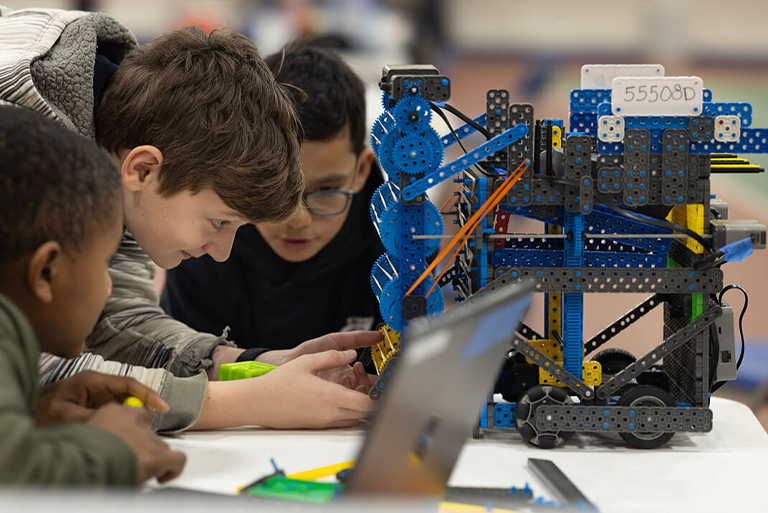- Home
- vex-go-robotics
VEX GO ROBOTICS
| Target Age | 6-9 years |
|---|---|
| Class Size | Limited to 10 students per session |
| Curriculum Design | Modeled after the Japanese educational framework |
| Session Duration | 50 minutes per session |
| Program Duration | Consisting of 11 sessions over a 3-month period |
| Teaching Resources | Featuring the advanced VEX kit accompanied by its specialized software |
Interactive worksheets to foster their learning
Geometry Kit with measuring tools for measurements and to do all calculative workThis combination of VEX kit and its software enables an engaging learning experience focused on fostering creativity, developing analytical-reasoning skills , and improving logical and decision-making in students.

VEX GO Robotics is an educational tool designed by VEX Robotics to support hands-on STEM learning for students.

- Educational Benefits and Uses: VEX GO Robotics is used to enhance STEM Robotics education among the students
- Integration with Curriculum: The kit includes a structured curriculum to aid teaching
- Hands-On and Project-Based Learning: Encourages learning through building and programming robots
- Programming and Coding: Features a user-friendly programming interface for beginners
- Versatility in Robotics Design: Allows for a wide range of customizable robot builds
- Promoting Collaboration: Designed to encourage teamwork among students
- Competitions and Events: Used in various robotics competitions and events
- Sensor Technology: Includes various sensors to expand robotic capabilities
- Accessibility and Inclusiveness: Aims to be accessible to a diverse range of students
- Adapting for Remote and Hybrid Learning: Utilized in remote and hybrid learning scenarios
- Technological Integration: Compatible with other educational technologies
- Future Innovations: Anticipated updates and improvements


- Competitions and Events: Used in various robotics competitions and events
- Sensor Technology: Includes various sensors to expand robotic capabilities
- Accessibility and Inclusiveness: Aims to be accessible to a diverse range of students
- Adapting for Remote and Hybrid Learning: Utilized in remote and hybrid learning scenarios
- Technological Integration: Compatible with other educational technologies
- Future Innovations: Anticipated updates and improvements
